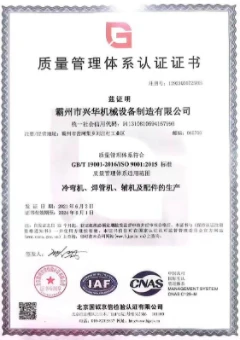steel cold rolling mill process
The Steel Cold Rolling Mill Process
Cold rolling is an essential manufacturing process in the steel industry, playing a crucial role in producing steel sheets and strips with superior dimensional accuracy and enhanced mechanical properties. Unlike hot rolling, where materials are processed at high temperatures, cold rolling involves the deformation of steel at room temperature. This article explores the steel cold rolling mill process, its significance, and the benefits it provides to manufacturers and consumers alike.
What is Cold Rolling?
Cold rolling is a process where steel is passed through a series of rollers at ambient temperatures, usually below its recrystallization point. This technique is typically used after hot rolling to improve the mechanical and surface properties of steel products. The cold rolling process not only reduces the thickness of the steel but also enhances its strength through strain hardening.
The Cold Rolling Mill Process
The cold rolling mill process consists of several stages
1. Slitting The first step involves taking large steel coils, known as pickled coils, from the hot rolling process and slitting them into narrower coils or strips. This is done using circular blades that cut the coils to the desired width.
2. Re-coiling After slitting, the strips are re-coiled into smaller rolls suitable for the next processing steps.
3. Cold Rolling The re-coiled strips undergo the cold rolling process. This operation is carried out in rolling mills, where steel passes between a pair of rollers that exert immense pressure. The reduction in thickness occurs through deformation, and the rollers can be adjusted to achieve specific thickness reductions.
4. Annealing Following the cold rolling process, the steel strips may require annealing. This heat treatment process relieves internal stresses that develop during cold rolling, restoring ductility and reducing hardness. The annealing process can be performed in a continuous furnace where the steel strip is heated and then gradually cooled.
steel cold rolling mill process

5. Pickling After annealing, the strips may be pickled to remove any oxide scale or impurities formed during the annealing process. This typically involves dipping the steel strips in a solution of hydrochloric or sulfuric acid.
6. Skin Pass A skin pass or surface treatment may be performed to improve the surface finish and create desired surface qualities. This step also ensures that the thickness is uniform across the entire length of the strip.
7. Final Inspection and Packaging Finally, the process concludes with a thorough inspection of the finished product to check for defects. The cold-rolled steel is then packaged and prepared for shipment to customers.
Benefits of Cold Rolling
The cold rolling process presents numerous advantages. One of the primary benefits is the improved dimensional accuracy of the steel products. Cold rolling allows for tighter tolerances, resulting in products that meet specific requirements for various applications, including automotive, aerospace, and construction.
Moreover, cold rolled steel exhibits enhanced mechanical properties due to strain hardening. This results in stronger materials that require less weight for similar structural integrity, enabling manufacturers to produce lighter products without compromising strength.
Cold rolled steel also features a superior surface finish compared to hot rolled materials. The smoother surface improves paint adhesion and reduces the risk of corrosion, making it an excellent choice for aesthetic applications and environments requiring durability.
Conclusion
The cold rolling mill process is a vital aspect of steel manufacturing, ensuring that high-quality products are produced with precise specifications and improved mechanical properties. Through various stages of slitting, cold rolling, annealing, pickling, and finishing, manufacturers can deliver steel products that meet the diverse needs of industries worldwide. As technology advances, the cold rolling process continues to evolve, leading to even greater efficiencies and better quality in steel production. This process not only highlights the significance of innovation in steel manufacturing but also reflects the importance of reliable materials in modern infrastructure and technology.
-
High Frequency Straight Seam Welded Pipe Production Line-BzZhou Xinghua Machinery Equipment Manufacturing Co., LTD.|line pipe steel&welded gas pipeNewsJul.30,2025
-
High Frequency Straight Seam Welded Pipe Production Line-BzZhou Xinghua Machinery Equipment Manufacturing Co., LTD.|High Precision&Automated SolutionsNewsJul.30,2025
-
High Frequency Straight Seam Welded Pipe Production Line - BzZhou Xinghua Machinery Equipment Manufacturing Co., Ltd.NewsJul.30,2025
-
High Frequency Straight Seam Welded Pipe Production Line-BzZhou Xinghua Machinery Equipment Manufacturing Co., LTD.|Precision Welding, High EfficiencyNewsJul.30,2025
-
High Frequency Straight Seam Welded Pipe Production Line|BzZhou Xinghua|Precision Welding&EfficiencyNewsJul.30,2025
-
High Frequency Straight Seam Welded Pipe Production Line - BzZhou Xinghua|Precision Engineering&EfficiencyNewsJul.30,2025


